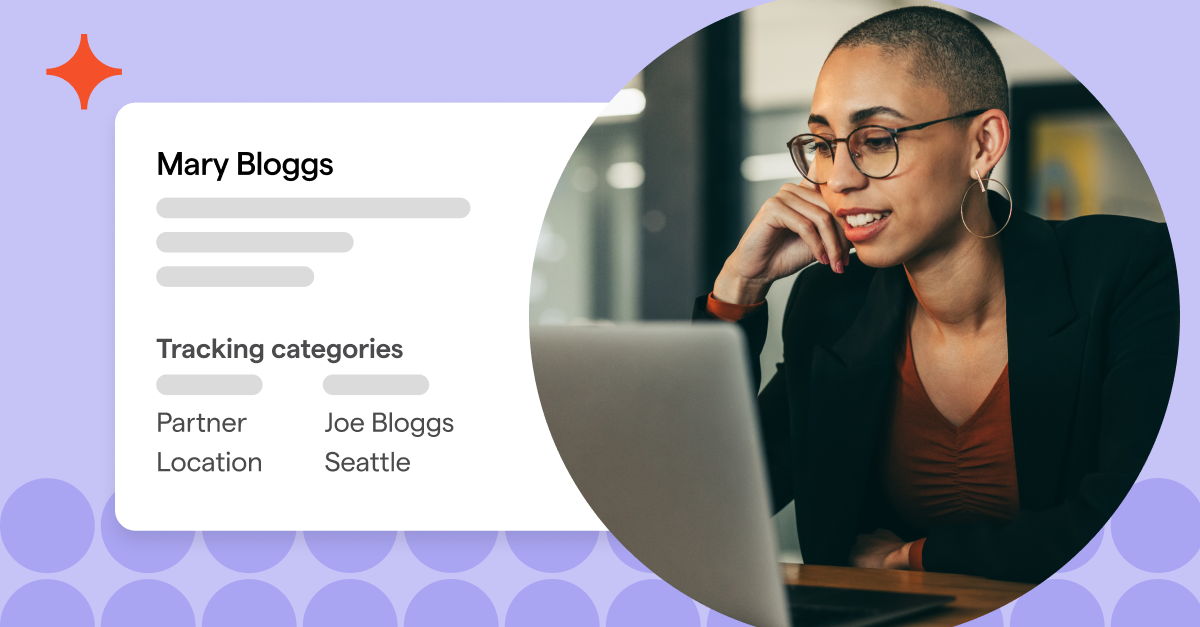Accounts receivable automation: 5 steps to automate AR processes
Discover effective strategies to automate accounts receivables, streamline invoicing, improve cash flow, and reduce payment delays with smart automation tools.

As an accountant or bookkeeper, you understand more than anyone just how pivotal cash flow management is to a business’s success. And the best strategy to maintain consistent revenue is to ensure clients can settle their bills efficiently and effortlessly.
This is where introducing automation into your accounts receivable (AR) process becomes invaluable. By streamlining how client invoices are issued, processed, and settled, you not only enhance productivity, but also elevate client satisfaction, and, in turn, amplify your profit margin.
In this guide, we’ll delve deep into the nuances of AR automation, exploring its multifaceted benefits and providing a roadmap on how to seamlessly integrate it within your accounting or bookkeeping firm.
Importance of automating accounts receivable in your accounting firm
Invoicing is one of the most vital touchpoints in managing client relationships and maintaining cash flow. Yet, in many accounting and bookkeeping firms, invoicing processes remain unnecessarily manual, leading to inefficiencies that can drain time and resources.
Without a streamlined AR automation system, client invoices are manually created and sent by the business. This means the company owner (or whoever handles accounts receivable) would generate an invoice at the time of billing, and then meticulously fill in the necessary information themselves.
From there, the business sends the invoice to the client. This is typically done via email, though some companies still dispatch paper invoices through the postal service.
As you can imagine, this manual process can take time and effort, especially if you’re invoicing multiple clients. Errors creep in during manual data entry, deadlines are missed, and payment delays grow. For firms striving to offer impeccable service and maintain steady revenue, this approach simply doesn’t cut it anymore.
While it’s not particularly difficult to generate an invoice, the task can be tedious, and your efforts are better spent on more strategic and high-impact tasks.
Here’s what happens when accounts receivable runs itself:
- Improved cash flow management: Invoices go out, reminders follow, and overdue accounts are nudged—all on time. Automation keeps cash flowing.
- Time savings for your team:. Automation handles the grunt work, leaving your team free for high-value tasks.
- Minimised errors: Automation means fewer mistakes, more accuracy, and smoother accounts.
- Better client relationships: No more awkward payment talks. Polished, timely reminders keep things professional and cordial.
- Enhanced financial insights: Real-time reporting shows who owes what, when. Stay ahead with sharper cash flow data.
In a world where precision earns trust, automating your AR process transforms how you work. It replaces friction with flow, ensuring your systems are as reliable as the expertise you deliver
How does AR automation work?
Accounts receivable automation (sometimes called ‘AR automation’) refers to a system or a workflow tailored to bookkeepers, accountants and other professional services that automatically generates and sends invoices at the right time. It can reduce or eliminate human involvement in the invoicing trajectory.
Depending on how your AR process is set up in your firm, you can streamline tasks such as:
Service-based invoice generation. Instead of manually entering each line item and amount, you can configure your software to automatically populate the invoice based on the services included in the business proposal or service agreement.
Sending invoices. Rather than tracking various dates for when to send the invoice, your system can automatically do it for you based on the parameters you’ve set. For example, if you typically bill clients on the first day of the month, your AR automation software can seamlessly do that for you.
Sending reminders. An AR automation platform can also send reminders to your clients if invoices aren’t paid on time. This takes the manual admin out of following-up on past-due invoices and significantly reduces the need for awkward billing-related conversations.
Payment processing. Most invoicing tools have built-in payment processing features or integrations. This means you don’t have to manually take down payment information or wait for checks to come in. When you’re using invoice processing software, clients can pay via a digital portal and the funds are deposited into your account automatically.
Steps to automate accounts receivables in your accounting and bookkeeping firm
Ready to implement an automated accounts receivable process into your enterprise? Although the specific steps you need to take may vary based on your accounting firm’s unique needs, processes, and existing systems, here are some universal best practices for bookkeepers and accountants to keep in mind.
1. Define your AR process
The first step is to iron out what your AR procedure is – or what you want it to be. Think about each step of your billing trajectory. This will help you determine the best software to use and how to configure it.
Here are some questions to consider at this stage:
When do you send invoices? Define the point at which your invoices need to be sent. Do you bill clients weekly, monthly, quarterly, or on an annual basis? Maybe it varies depending on the client engagement. Whatever the case, set up your system accordingly.
What’s your payment structure? Think about the mechanics of your billing procedure. Are you paid on an hourly or per-project basis? Do you charge a deposit or bill everything upfront? Do you prefer initiating payment after a service has been rendered? The right answer depends on your business.
What types of payments do you accept? Next up, think about the payment methods you choose to accept. Credit and debit cards are highly convenient and have become the standard when doing business. You could also consider accepting automated clearing house (ACH) payments – a favorable option if you’re wary of credit card processing fees.
When do you send invoice reminders? Iron out what happens when payments are delayed. When should reminders be sent? If you’re enforcing penalties like late fees, how much would they cost?
2. Find the right client invoicing solution
Use the information you’ve gathered above to find and select the right automated accounts receivable software tailored for your accounting firm. Create a list of features you need, then use it to guide your research.
One of the key tasks at this stage is to evaluate the platform’s features and capabilities. Set your sights on solutions that tick the right boxes and enable you to implement your invoice processing.
If you require upfront payment before starting an engagement, your invoicing system should be able to do that. Take Ignition, for example, which enables you to require payments before a client accepts a proposal.
Or, let’s say your payment schedules vary from one client to the next. Maybe you have a combination of month-to-month and annual engagements for your bookkeeping services. In these instances, it helps to have a system with flexible invoicing capabilities.
Ignition, for instance, offers invoicing features and automated billing to support various billing schedules – including weekly, monthly, annual, or on project completion.
3. Look at software integrations with your client engagement and invoice processing tools
Another important consideration? Software integrations. For accounting and bookkeeping workflows, it’s recommended that you choose a system that integrates with your business solutions. These may include your accounting software, client engagement platform, payment processor, and customer relationship management (CRM) software.
When your various systems are able to talk to each other, information flows from one app to the next, further reducing manual work and double entry.
4. Establish and fine-tune your invoice processing system
Once you’ve selected a solution tailored for your accounting or bookkeeping firm, the next step is to get the system up and running to fit your workflow and billing processes. This is the stage where you:
- Configure your settings (based on your payment policies and processes).
- Set up your regular services and line items.
- Connect the system with your other solutions.
The specific steps and actions you need to take will depend on your client billing software. Some accountants choose to use their accounting software to send invoices, while others may opt to use their client management platform.
Determine which setup works best for your business and go from there.
If you’re using Ignition, you can integrate the software with solutions such as Xero and QuickBooks to streamline your invoice processing, client billing, and client proposals. This allows Ignition to access your client lists and streamline your client proposals. Invoices are created from your proposals, and this gives you some flexibility to configure these before sending them to the client.
5. Leveraging automated accounts receivable for business growth
Finding and setting up the right AR automation process takes some time, but it’s certainly worth the effort. Here are some of the benefits you can unlock through automated invoicing.
Frees up your time to focus on high-value tasks
Automation reduces the time you spend on the accounts receivable workflow. Rather than taking minutes (maybe even hours) out of your day to manually generate and send invoices, your system can take care of everything for you.
This frees up time, empowering you to devote more energy towards other aspects of your business, such as business strategy, revenue growth, personnel development, and client satisfaction.
"Ignition eliminated manual follow-ups, allowing us to focus on what we do best: finding great talent for our clients."
Parker Cox, CEO and Co-Founder, Pavago
What are the benefits of accounts receivables automation for an accounting firm?
Doing things manually opens you up to human error. For example, if you’re manually entering payment amounts, it’s all too easy to mistype a number or add another zero to the invoice.
A study from Qvalia shows that in Nordic countries, 25 percent of invoices – despite undergoing a correction process internally – contained errors that resulted in lost business revenue. On average, an organization is spending 31 days to resolve and correct errors in invoicing.
Sending an incorrect invoice not only triggers additional back-and-forth with the client, it also reflects poorly on your business.
Improves cash flow because you get paid faster
These errors can also delay the invoicing process, which means you may not don’t get paid right away. Automated invoicing paves the way for rapid payment by ensuring on-time delivery, and reminders to pay in the event the invoice remains unpaid beyond the deadline.
Saves you money
Between the time it takes to generate invoices and the cost of paper (if you’re mailing out invoices), the money spent on manual processing can add up. Research by SAP Concur found that it costs an average of $12.90 to process one invoice.
SAP’s study also found that automation is helpful in decreasing expenses, delivering an average of 29 percent in cost reductions.
Simplifies and standardizes your invoicing process
One of the downsides of manual procedures is the tendency to be inconsistent. When a person is tasked with manually creating invoices every time, that process can vary slightly from one period to the next.
Let’s say an employee sends an invoice monthly. On the 1st June they send the invoice at 8am sharp. But as the month progresses they become busy and aren’t able to invoice the client again until the 5th July.
Scenarios like these, that can impact your cash flow and business operations, are a thing of the past when you’re using an automated invoicing system. Because everything is done automatically, you don’t have to worry about inconsistent processes.
Your clients receive their invoices on the same day and time every month, so they always know when to expect the bill. This consistency also makes you look more professional and improves your client relationships.
Best practices to follow to reduce errors in accounts receivables automation
Automation can revolutionize your AR process, but its effectiveness depends on how well it’s set up. Precision and attention to detail are key to ensuring reliable, consistent results. Here’s how to get it right:
- Start with a clear workflow: Before automating, define each step of your AR process. Map out when invoices are created, sent, and followed up, and design your automation to align with these stages. A clear structure prevents gaps and ensures nothing falls through the cracks.
- Customize your templates: Ensure your invoices are professional and consistent by tailoring templates with your branding, service details, and terms. Platforms like Ignition can pull data directly from client proposals, eliminating manual entry errors and ensuring accuracy.
- Use software that integrates seamlessly: Systems that don’t communicate lead to data mismatches and inefficiencies. Ignition connects with tools like Xero and QuickBooks, creating a streamlined flow of client data and keeping your invoices up to date without extra steps.
- Set up smart reminders: Unpaid invoices disrupt cash flow. Automating reminders ensures clients are gently but consistently prompted to pay. Tools like Ignition allow you to schedule reminders at set intervals while maintaining a professional tone.
- Regularly audit your setup: Automation isn’t a set-it-and-forget-it process. Review your settings, payment schedules, and integrations regularly to identify and resolve issues before they become bigger problems.
Choosing purpose-built software like Ignition gives you the tools to avoid errors and improve efficiency. It’s designed to integrate seamlessly into workflows for accountants and bookkeepers, helping you turn automation into a reliable asset rather than just a tool.
How to choose the right accounts receivable automation software?
The right accounts receivable automation software can transform your firm’s workflow, reduce admin overhead, and improve cash flow. But with so many options, how do you make the best choice? Here are the key factors to consider:
- Features aligned with your needs: Look for tools designed for service-based businesses. Recurring invoicing, flexible payment schedules, and automated reminders are not just nice-to-haves; they’re critical. Platforms like Ignition simplify client billing with features tailored to match your workflow seamlessly.
- Seamless integrations: Choose software that works in harmony with your existing systems, such as accounting platforms like Xero or QuickBooks. Your data should flow consistently across your entire workflow.
- Ease of use: Complexity creates more problems than it solves. Look for software with an intuitive interface and simple workflows that allow you and your team to adapt quickly without unnecessary confusion.
- Secure payment options: Ensure the platform supports secure, convenient payment methods like credit cards, ACH or SEPA transfers. A simple and reliable payment process increases client trust and ensures timely payments.
- Scalability: Think long-term. Choose a platform that evolves with your business, whether it’s managing more clients, introducing new payment options, or handling more complex services as your firm grows.
- Tailored for your industry: Generic tools miss the mark for accountants and other professional services. Platforms like Ignition, built specifically for industries like accounting, marketing, and IT, go beyond basic automation. With proposal-based invoicing, integrated billing, and customization options, they align with your workflow and elevate how you work with clients.
How to automate your accounts receivables with Ignition
With Ignition, AR automation becomes an integrated part of your workflow. Proposals, payments, and invoicing come together in a single, seamless flow, transforming billing into an effortless and precise operation..
- Proposals that drive billing: In Ignition, everything starts with the proposal. Once accepted, the system sets up the entire billing process—payment schedules, amounts, and terms—directly from the agreed engagement. Every detail is pre-configured, removing any chance for errors.
- Invoices without manual effort: Ignition takes over invoice creation, automatically generating them according to your defined schedule. Whether you bill monthly, upon project completion, or upfront, invoices are sent with no additional input required.
- Payments handled seamlessly: Clients can pay directly via credit card or direct debit, and payments are processed automatically. No manual reconciliation or waiting for checks—just faster payments and a steady cash flow.
- Built-in follow-ups: Ignition handles overdue payments with automated reminders, so you never have to manually chase clients. Timely follow-ups keep communication professional and ensure invoices are paid on time.
- Visibility at every step: Stay on top of your accounts receivable with real-time business insights. Ignition gives you a clear view of invoices, payments, and outstanding balances, so you’re always in control.
Ready to automate your AR processes?
Join the 7,500+ professional services business running on Ignition.

